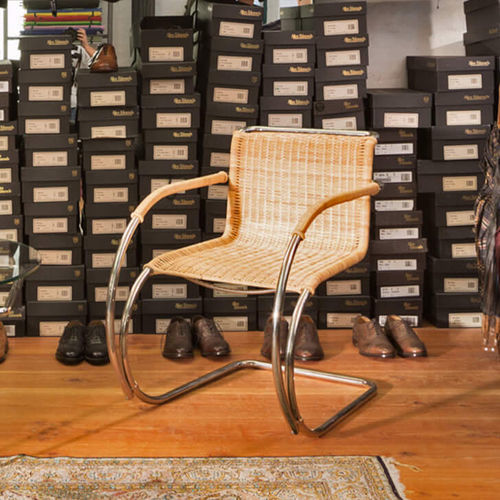1926 saw the launch of the architectural collective “Der Ring” with members including Walter Gropius and Ludwig Mies van der Rohe. That same year, Ludwig Mies van der Rohe designed the most beautiful chair of the century with a single brushstroke: the Weißenhof Chair. A year later, in 1927, it was displayed at the Weißenhof exhibition in Stuttgart. In 1985 Stefan Wewerka described it as “the most beautiful ‘chair construction’ since the throne of Charlemagne.” The first sketches were influenced by the gas tube chair without hind legs created by the architect Mart Stam. Sergius Ruegenberg reminisced on the birth of the Weißenhof chair in 1985: “Mies returned from Stuttgart in November 1926 and told us about Mart Stam and his chair concept. We had a drawing board on the wall, on which Mies sketched the Stam chair; rectangular, starting from the top.”
Ludwig Mies van der Rohe’s verdict on Stam’s chair: ‘Ugly, something really ugly, with these couplings. If he had at least made it rounder – that would have looked better’ – and he drew an arc. Simply an arc in his own hand added to the Stam sketch – that made the new chair.”
Only one thing was missing to complement its extraordinary form: the seat and its covering. That’s where Lilly Reich stepped in – an interior designer, who worked in Ludwig Mies van der Rohe’s office from 1926. She and Mies came up with the idea of using wickerwork for the Weißenhof chair. Together with a master basket maker, Reich developed the new aesthetic that perfected the expansive chair as a holistic work of art.















